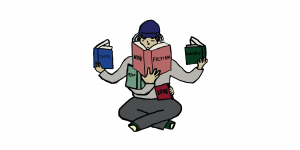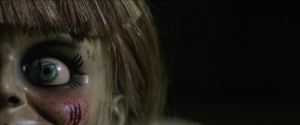For as long as humans have told stories, we have told of monsters. The Bible spawned the Devil and the Four Horsemen of the Apocalypse. The first true English-language epic, “Beowulf”, is a tale of the monstrous Grendel, his mother, and one fateful dragon. What different cultures and societies across time have defined as monstrous offers an anthropological and philosophical perspective on what they both fear and desire. From mindless zombies to omniscient gods, literary monsters reflect and distort humankind.
As Halloween and mainstream seasonal acceptance of the monstrous approaches, here are five novels featuring monsters that served as effective mirrors for human nature.
A note: The monsters on this list are purposefully inhuman, as the term “monster” applied to human or humanoid subjects becomes much trickier and more subjective.
The Creature—Frankenstein by Mary Shelley (1818)
As the first true science fiction novel, Frankenstein was one of the earliest works to sympathetically approach monstrosity from the perspective of the inhuman itself. The Creature gets an enormously bad rap for what is essentially an ugly baby forced into the world, seeking acceptance and understanding in the wake of abandonment. That’s all of us; we are all the Creature. Such a depiction of the monstrous offers questions about humanity, how we define it, and whether that definition means anything at all. Over time, the portrayal of the Creature has evolved from an intelligent and sensitive creature seeking happiness to a mindless lump of electrocuted green meat, erasing all of Mary Shelley’s nuance and thoroughly disrespecting our boy. If anyone was a monster here, it was Victor Frankenstein, deadbeat dad and deranged college student with a god complex. Justice for the Creature.
The Wood—Uprooted by Naomi Novik (2015)
Uprooted features a monster without a physical body. Instead, it is the corrupted Wood that plagues protagonist Agnieszka and her community, poisoning the minds and bodies of anyone venturing too near. The victims of the Wood lose their grasp on reality, their bodies calcifying into wood. Forests are timeworn fantasy and horror settings, often tied to an “uncivilized” unknown and, in Christian contexts, paganism and the Devil. This is not so in Uprooted; Novik’s Wood is simply misunderstood. Once, it was home to an ancient race of forest-dwelling people who, when met with humankind’s fire and axes, turned themselves into trees in a misguided effort for self-preservation. Since this slaughter, the Wood Queen’s spirit has been seeking vengeance upon the nearby remaining humans. While not as overt in its political messaging as Ring Shout (2020), Uprooted offers a highly folkloric look at imperialism and environmental devastation. Novik’s language is lush and vital, weaving an ecological fantasy from green and gold sentences. Her Wood teems with life and pain, both heartbreaking and terrifying.
The Ku Kluxes—Ring Shout by P. Djèlí Clark (2020)
In a barely fantastical 1915, the notorious white supremacist film A Birth of a Nation releases a curse upon the United States. As a result, the Ku Klux Klan has transformed into multi-mouthed, quadrupedal, carnivorous demons masquerading as average white Americans—and the “Ku Kluxes” are multiplying, particularly in Georgia, the home of our intrepid heroine Maryse. Clark’s Ku Kluxes are an exercise in the grotesque, body horror at its most horrific—their lashing tongues are ridged with teeth, their many maws gaping. Part of what makes the Ku Kluxes so effective is their foundation in the physical, reflecting the real and tangible violence that the Klan has inflicted for generations upon Black Americans. By portraying the Klan as literally monstrous and physically grotesque, Clark exposes how the process of dehumanization causes the oppressor to lose their own humanity. Ring Shout is an excellent novella blending the fantastic with the historical to create a portrait of America at once familiar and uniquely horrific. Elements of Gullah root magic and resilient community offer a form of resistance and power for our heroes, bringing Ring Shout beyond the realm of simple allegory to become a fully fleshed out story of Black history and folk tradition in the American South.
The Resurrection Beasts—Harrow the Ninth (The Locked Tomb #2) by Tamsyn Muir (2021)
I will force-feed Tamsyn Muir to every Leisure book list I can. In a world of necromancy, body horror, split consciousnesses, and pathetic immortals, it is safe to say the monstrous appears in many forms within The Locked Tomb series—some more human than others. But the Resurrection Beasts take the cake in terms of conceptual grandiosity. The vengeful ghosts of nine dead planets, the Resurrection Beasts are coming to kill God. And they’re terrible beyond description. (Literally. None of the characters can describe the Beasts except to say that their presence invokes vomiting, terror-induced-pants-wetting, and madness.) Muir takes the universal concept of a lost soul to the grandest scale: It’s only reasonable that a dead planet’s soul—encompassing all the life that once inhabited it—would be too enormous and mournful for comprehension.
The Newts—The War with the Newts by Karel Čapek (1936)
Humankind discovers they can exploit the labor of a dexterous species of Newt for more efficient pearl diving. Over time, these Newts evolve into a highly intelligent and physically able species, and humans become ever more dependent on Newt-labor. Thus spawns the Newt-Human conflicts, ultimately resulting in a proletarian revolution and all-out class warfare. When the Newts claim dominance, it is clear they will seek to wipe out humanity, sparing a few for labor. They will ultimately divide amongst themselves and self-destruct, committing the same errors as their human overlords. Written in 1930s Czechoslovakia, Čapek’s satirical novel offers a scathing critique of capitalism, unethical labor practices, militarism, and imperialism. As always, the monstrous provides a warped funhouse mirror for humanity, examining the ways in which we hurt ourselves and the world around us to devastating effects. Yet still, a good monster story always expresses the nuance of human pain and destruction—in every Newt warlord there was once a gentle pearl-diver.




